Day 1 of the MLB draft, featuring Rounds 1 and 2 and their associated supplemental picks, is now in the books, with 73 players selected Monday. Here are some quick thoughts on the evening, highlighting the picks I liked the most and the picks with the biggest gaps between my pre-draft rankings and where the players were selected. (If you noticed I phrased that carefully, you're right.) I threw a few stray thoughts on the second round at the end and added a list of the best players still available for Tuesday. I will do longer individual recaps for all 30 teams at the end of the week.
My favorite picks
 Atlanta Braves: RHP Kyle Wright
Atlanta Braves: RHP Kyle Wright
Wright falling to fifth overall reminds me of when Buster Posey, who was the top college player and the No. 2 guy on my board in 2008, slid to the fifth overall pick. That was a selection that changed the history of multiple franchises and helped the Giants win all three of their World Series this decade. Wright came into the year as the consensus top college pitcher, bringing size, stuff and pedigree (including the Vanderbilt experience) into his junior spring, but he struggled a little with command in the first half of the season before the switch flipped in early April with a dominant, 13-strikeout shutout against Florida. I think he comfortably projects as a No. 2 starter with a chance to develop into a No. 1, depending on his fastball command and the progress of his changeup.
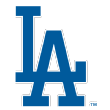 Los Angeles Dodgers: OF Jeren Kendall
Los Angeles Dodgers: OF Jeren Kendall
I had Kendall as the No. 1 prospect in the class coming into the spring, but he struck out even more as a junior (74 times, or 25 percent of his plate appearances) than he had as a sophomore. So while he has plenty of tools -- grading at 70 run, 60 raw power, 60 field -- there's a real question over whether he'll hit enough to ever be a regular. The Dodgers can take a risk like this with their first-round pick; they have so much cash and so many elite young players that they can roll the dice on an upside player like Kendall with the 23rd pick, even knowing they might end up without a big leaguer.
 Baltimore Orioles: LHP D.L. Hall
Baltimore Orioles: LHP D.L. Hall
Hall has top-10 stuff, athleticism and lefty-ness, but I think he fell to 21st because there's a general fear of high school pitchers and because there was gossip about Hall having some sort of makeup questions, none of which was ever substantiated to my ears, at least. I see a lefty whose fastball sits at 93-94 mph, complemented with a plus curveball and average changeup, athleticism and a good delivery. The O's have had some terrible luck with high draft-pick pitchers lately, but if they can keep Hall healthy, which means not trying to change his delivery or position on the rubber, they got a steal.
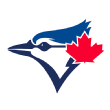 Toronto Blue Jays: SS Logan Warmoth
Toronto Blue Jays: SS Logan Warmoth
Warmoth had my favorite swing in the draft, and I believe he stays at shortstop in the long term, so the big question on him is whether his pretty swing will produce enough hard contact to make him a good regular or even a star. He's quite athletic, an above-average runner with good actions on both sides of the ball, and I think he can still get a little stronger going forward. So there's a high floor of him being a good utility infielder, with a very good chance that he ends up a regular or more. That's great value at pick No. 22. They backed it up with Nate Pearson, a 6-foot-6 junior college right-hander who hit 101 mph in a workout for scouts on Memorial Day, but who has pitched more in the mid-90s and is still in search of an average secondary pitch; he could move quickly as a reliever, or they could treat him like a high school arm and slow-track him as a starter.
 Pittsburgh Pirates: Three of my top 22 players
Pittsburgh Pirates: Three of my top 22 players
The Pirates' three picks on Day 1 all ranked in my top 22 players: Shane Baz (No. 11), Conner Uselton (No. 20) and Stephen Jennings (No. 22). Jennings was the biggest surprise, because teams had indicated they didn't think he'd still be available in the second round, where the Pirates took him. Baz went about where he was expected to go, 12th overall, but the other two appeared to be first-round talents -- Uselton, because he can hit and at worst should be an above-average defender in an outfielder corner; Jennings, because he's a very athletic kid who got off to a slow start in the spring after coming back in just six months from a torn ACL. That's a great haul, assuming Pittsburgh signs them all, given that their second pick didn't come until No. 42. With their other second-round pick, they even added Calvin Mitchell, a prep first baseman who was supposed to be a plus hit guy but struggled at the plate this spring relative to expectations.
The first pick
Royce Lewis was a slight surprise as the first overall pick, especially because, like the Upton brothers were in their own draft years, he's a shortstop who is almost universally assumed to be moving off the position. (Melvin Upton was the No. 2 overall pick in 2002; Justin was the No. 1 overall pick in 2005.) Most people, myself included, assume Lewis is headed for center field. He is a plus runner with quick hands and a rotational swing that should eventually produce power as he fills out physically. His footwork is not right for the infield, but in center his speed and instincts would be more important and should make him a plus defender.
 The Twins backed him up with Brent Rooker, a redshirt junior from Mississippi State -- so, in the controlled economy of the baseball draft, a player with very little leverage. Rooker destroyed the SEC this year with a revamped swing, slugging over .800 and hitting well against good pitching in the conference. He turns 23 in November and doesn't really have a position, so he needs to rake and do it quickly.
The Twins backed him up with Brent Rooker, a redshirt junior from Mississippi State -- so, in the controlled economy of the baseball draft, a player with very little leverage. Rooker destroyed the SEC this year with a revamped swing, slugging over .800 and hitting well against good pitching in the conference. He turns 23 in November and doesn't really have a position, so he needs to rake and do it quickly.
The Twins also took Landon Leach at pick 37, the first selection in the second round. He’s a Canadian pitcher and was the first player selected outside of my top 100. The 6-foot-4 right-hander throws 91-93 mph heat along with a hard slider, but the fastball is very straight, and his arm is late relative to his landing leg.
On the other hand ...
These picks had the biggest gaps between where I'd ranked the players before the draft and where they were taken.
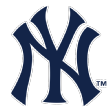 New York Yankees: RHP Clarke Schmidt
New York Yankees: RHP Clarke Schmidt
Schmidt was the lowest-ranked player on my top 100 to be taken in the 27 picks of the first round. I never bought into him as a first-round talent, given his rough delivery, but his stuff did tick up this year to the mid-90s, and he was still throwing strikes when he blew out his elbow in April, requiring Tommy John surgery. The Yankees must believe Schmidt is a top-10 talent when healthy, given the risk with TJ guys -- most come back 100 percent, but many don't. Given what I'd seen from Schmidt as far as both his stuff and delivery before this year, I didn't think he was likely enough to remain a starter to rank him there.
The Yankees also took Matt Sauer at pick 54, close to where I ranked him (No. 66). He’s a big, athletic, hard-throwing right-hander with a violent head-jerk in his delivery, so perhaps they're just not worried about the things that worry other teams (or me!) in pitcher mechanics.
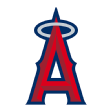 Los Angeles Angels: OF Jordon Adell
Los Angeles Angels: OF Jordon Adell
Taken with the 10th pick, Adell was clearly going somewhere in this range within the draft based on his tools, but I didn't find a more polarizing guy among scouts this spring. Some think he's a tooled-up budding superstar, and some think he's the next Anthony Hewitt -- all tools, no production. He also had issues throwing this spring; he'd been 90-93 mph as a pitcher in the past but was showing, in the words of more than one scout, "a 30 arm" from the outfield this year.
On the one hand, I completely understand seeing a guy with this upside and pushing him to the top of your draft board, but I personally would have a hard time with this profile -- raw hitter, a lot of swings and misses, betting you can get the hit tool to where it needs to be so the other tools play -- knowing he has also got something amiss with his arm, too.
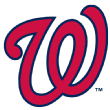 Washington Nationals: LHP Seth Romero
Washington Nationals: LHP Seth Romero
I never saw Romero pitch, because he kept getting suspended and eventually got kicked out by the University of Houston for his behavior. We know he got in a fight with a teammate during batting practice. We know he failed a drug test of some sort. We know he missed curfew, which might not sound like a big deal, but it's your draft year and you can't be bothered to make curfew? Do you want to play pro ball?
I know he was a potential top-10 pick when healthy, but it's not the cleanest delivery you'll see anyway, and on top of that, his commitment to his craft is questionable. When you're Mike Rizzo, secure in your job as the Nats’ general manager with your team running away with the division, you can take a chance like that. I don't think I ever could.
Other picks of note
A few players I ranked as first-rounders went in the second round, mostly because of bonus concerns: Sam Carlson, a big, hard-throwing right-hander from Minneapolis who needs a better breaking ball, went to Seattle in the second round (pick 55); Mark Vientos, an athletic infielder who probably ends up at third base, still just 17½ years old with lots of physical projection and a quick bat, went to the Mets shortly after that (pick 59); and Griffin Canning, who deserves his own paragraph, went to the Angels at pick 47.
Canning was a sure first-rounder and could have gone 10th overall to the Angels if the board had gone differently up top ... and if he hadn't gotten an MRI, part of MLB's new voluntary process in which players can choose to submit these exam results to all teams. Whatever teams found in Canning's test, they didn't like, and it cost him a million bucks. Canning has some effort in his delivery, and he was worked extremely hard at UCLA for three years -- 137 pitches the night I saw him -- but whatever the cause of the injury was, it dropped him in the draft. It's the Angels' gain, and if Canning has to miss a year because of surgery, the opportunity cost of a second-round pick is so much lower than that of a first-round pick that I understand taking the gamble there.
Best available
These are the top players from my Big Board still available heading into Day 2:
1. Blayne Enlow, RHP, St. Amant (Louisiana) High School
2. Nick Allen, SS, Francis Parker High School, San Diego
3. Kyle Hurt, RHP, Torrey Pines High School, San Diego
4. Garrett Mitchell, OF, Orange Lutheran High School, Orange, California
5. Mason House, OF, Whitehouse High School, Tyler, Texas
6. Tanner Burns, RHP, Decatur (Alabama) High School
7. Adam Oviedo, SS, Alvarado (Texas) High School
8. Blaine Knight, RHP, Arkansas
9. Ricardo de la Torre, SS, Puerto Rico Baseball Academy, Gurabo, Puerto Rico
10. Jacob Heatherly, LHP, Cullman (Alabama) High School
